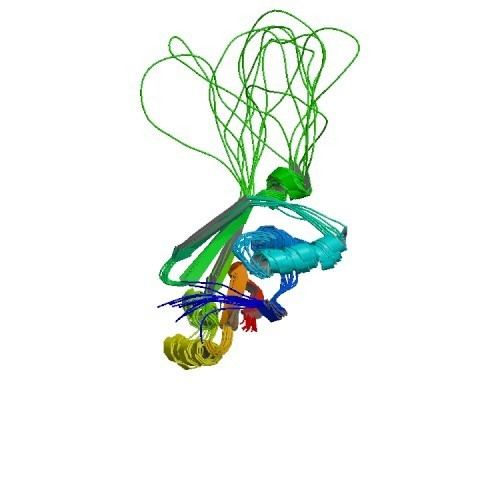Entrez 540 | Ensembl ENSG00000123191 | |
 | ||
External IDs OMIM: 606882 MGI: 103297 HomoloGene: 20063 GeneCards: ATP7B | ||
Wilson disease protein (WND), also known as ATP7B protein, is a copper-transporting P-type ATPase which is encoded by the ATP7B gene. ATP7B protein locates in trans-Golgi network of liver and brain, balances the copper level in the body by excreting excess copper into bile and plasma. Genetic disorder of the ATP7B gene may cause Wilson's disease, a disease in which copper accumulates in tissues leading to neurological or psychiatric issues and liver diseases.
Contents
Gene
Wilson disease protein is associated with ATP7B gene,approximate 80 Kb, located on human chromosome 13 and consists of 21 exons.The mRNA transcribed by ATP7B gene has a size of 7.5 Kb, and which encodes a protein of 1465 amino acids.
The gene is a member of the P-type cation transport ATPase family and encodes a protein with several membrane-spanning domains, an ATPase consensus sequence, a hinge domain, a phosphorylation site, and at least two putative copper-binding sites. This protein functions as a monomer, exporting copper out of the cells, such as the efflux of hepatic copper into the bile. Alternate transcriptional splice variants, encoding different isoforms with distinct cellular localizations, have been characterized. Wilson disease is caused by various mutations. One of the common mutations is single base pair mutation,H1069Q.
Structure
ATP7B protein is a copper-transporting P-type ATPase, synthesized as a membrane protein of 165 KDa in human hepatoma cell line, and which is 57% homologous to menkes disease associated protein ATP7A.
ATP7B consists of several domains:
The CPC motif (Cys-Pro-Cys) in transmembrane segment 6 characterizes the protein as a heavy metal transporting ATPase.
The copper binding motif also shows a high affinity to other transition metal ions like zinc Zn(II), cadmium Cd(II), gold Au(III), and mercury Hg(II). However, copper is able to decrease the zinc binding affinity at low concentration and increase copper binding affinity dramatically with increasing concentration to ensure a strong binding between the motif and copper.
As a P-type ATPases, ATP7B undergoes auto-phosphorylation of a key conserved aspartic acid (D) residue in the DKTGT motif. The ATP binding to the protein initiates the reaction and copper binds to the transmembrane region. Then phosphorylation occurs at the aspartic acid residue in the DKTGT motif with Cu release. Then dephosphorylation of the aspartic acid residue recovers the protein to ready for the next transport.
Function
Most of ATP7B protein is located in the trans-Golgi network (TGN) of hepatocytes, which is different from its homologous protein ATP7A. Small amount of ATP7B is located in the brain. As a copper-transporting protein, one major function is delivering copper to copper dependent enzymes in Golgi apparatus(e.g.holo-ceruloplasmin(CPN)).
In the human body, liver plays an important role in copper regulation including removal of extra copper. ATP7B participates in the physiological pathway in the copper removal process in two ways: secreting copper into plasma and excreting copper into bile.
ATOX1
ATP7B receives copper from cytosolic protein Antioxidant 1 copper chaperone (ATOX1). This protein targets ATP7B directly in liver in order to transport copper. ATOX1 transfers copper from cytosol to the metal binding domain of ATP7B which control the catalytic activity of ATP7B.
Several mutations in ATOX1 can block the copper pathways and cause Wilson disease.
GLRX
ATP7B interacts with Glutaredoxin-1(GLRX). Subsequent transport is promoted through the reduction of intramolecular disulphide bonds by GLRX catalysis.
Associations with Wilson disease
Wilson disease happens when accumulation of copper inside the liver causes mitochondrial damage and cell destruction and shows symptoms of hepatic disease. Then, the loss of excretion of copper in bile leads to an increasing concentration of copper level in urine and causes kidney problems. Therefore, symptoms of Wilson disease could be various including kidney disease and neurological disease. The major cause is the malfunction of ATP7B by single base pair mutations, deletions, frame-shifts, splice errors in ATP7B gene.
